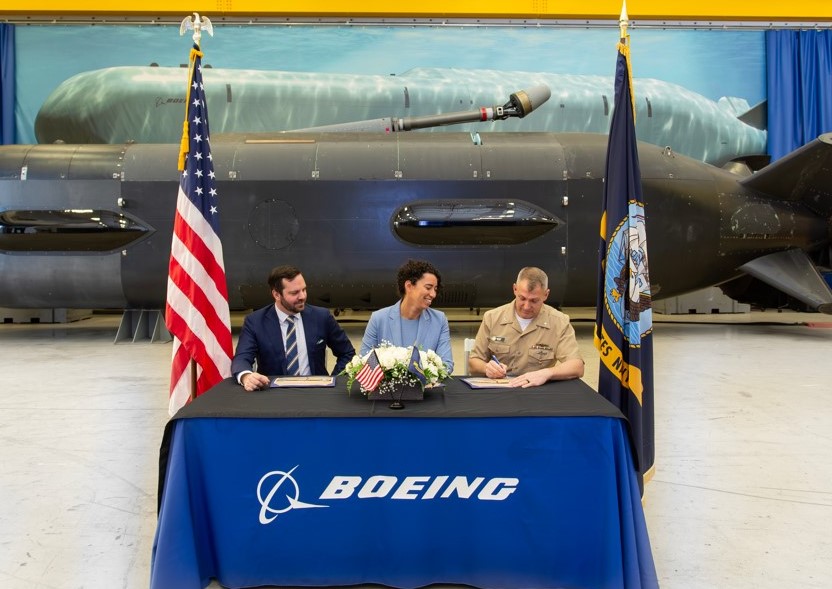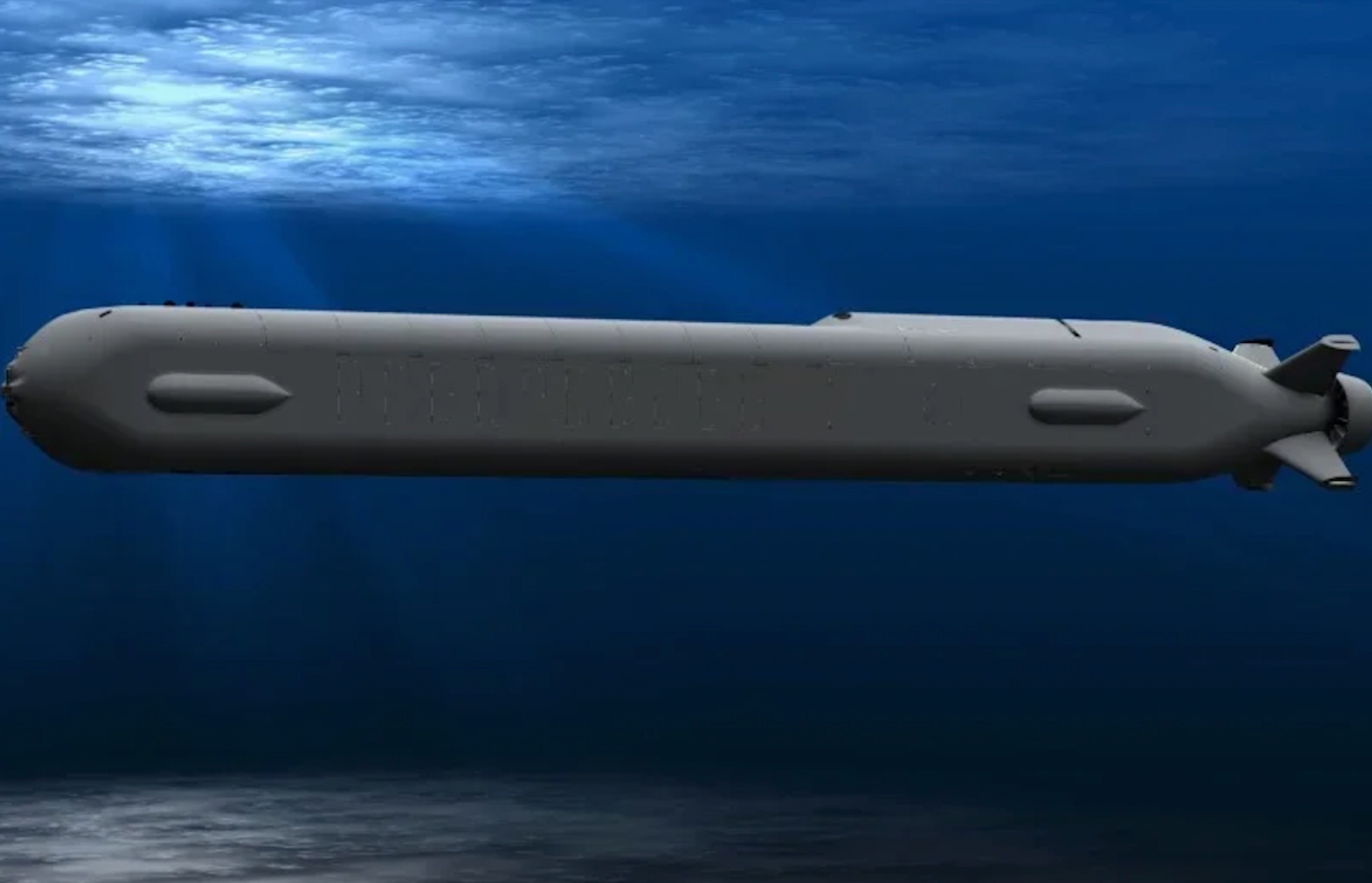Boeing has now delivered the first of its Orca extra-large unmanned undersea vehicles, or XLUUVs, to the U.S. Navy. Delivery of the submarine drone has been delayed by several years, in part due to differences between Orca and its prototype as well as the onset of the COVID-19 pandemic.
The delivery was announced earlier today by Boeing, following the completion of acceptance testing earlier in December. In partnership with the Navy, it has previously undergone several phases of at-sea testing, including maneuvering above and below the surface which we saw glimpses of back in the summer. In all, Boeing is set to deliver a further four Orcas to the Navy, with the final example slated to be handed over in June of 2024.
As Boeing states, the delivery of Orca — a fully autonomous uncrewed underwater vehicle (UUV) with a large payload capacity — represents the “culmination of more than a decade of pioneering work.” The vehicle is derived from an earlier private venture known as Echo Voyager — itself an evolution of previous UUV concepts Echo Seeker and Echo Ranger — which the company began designing and developing in 2012. In 2017, the Navy awarded development contracts for XLUUVs to Boeing as well as Lockheed Martin, prior to awarding Boeing and shipbuilding partner Huntington Ingalls Industries $43 million for four Orcas in February 2019. A fifth Orca was subsequently ordered in March of that year.

Since then, however, delays and cost growth have ailed the program. At one stage, it was planned that the first Orca would be delivered to the Navy by December 2020, with all five vehicles being received by the service at the end of 2022, at the latest. A report by the Government Accountability Office (GOA) from September 2022 found that key differences between Echo Voyager and Orca were not addressed by Boeing prior to fabrication, requiring the re-design of key components and leading to delays. The impact of the COVID-19 pandemic was also identified as a contributing factor to delays. The GOA report concluded that the overall program was at least $242 million, 64 percent higher than its original cost estimate.

The 80-ton, 85-foot-long Orca is designed to be highly modular in order to suit different mission requirements. Its core vehicle provides “guidance and control, navigation, autonomy, situational awareness, core communications, power distribution, propulsion and maneuvering, and mission sensors.” A distinctive part of its design is the extendable mast which, as we’ve previously seen during at-sea testing, can be raised when close to the surface, and provides a number of functions including satellite connectivity.

Within the XLUUV’s aft section lies space for modular payloads. The 34-foo-long payload section is capable of supporting an eight-ton payload capacity, and can be reconfigured for a range of mission sets. The Navy primarily plans to utilize this space first to dispense mines.
The service also wants Orca’s modular payload section to accommodate other payloads to undertake different missions, too, in order to conduct minesweeping missions, electronic warfare, and undersea surveillance. Future payloads are expected to include synthetic aperture sonar will be a feature, allowing Orca to map the ocean floor.

As well as this, the Navy is also interested in adding additional weapons systems to arm its XLUUVs, including torpedoes, cruise missiles, and even aerial drones.
Another key feature of Orca, which will only enhance its utility for the Navy, includes its hybrid diesel-electric propulsion system; allowing it to stay submerged for long periods of time and move underwater silently. Its diesel-electric engine, combined with lithium-ion batteries, should allow Orca to remain at sea for months at a time, all while cruising at speeds of around three knots, as we’ve highlighted before. Its use of a shrouded propulsor, rather than a conventional propeller, also adds to its ability to move silently and efficiently.
How exactly Orca will be launched at sea by the Navy remains less clear, as it’s too large for submarines to carry or launch. As such, it will require being launched from either a large surface ship or via a pier. As Naval News originally reported, the Navy’s Expeditionary Sea Bases (ESB), which already support numerous smaller uncrewed underwater vehicles (UUVs) and uncrewed aerial vehicles (UAVs), could be modified for launching and recovering larger platforms such as Orca.

However, once deployed, Orca’s ability to operate across large areas over lengthy time periods quietly will make them useful assets in a variety of contexts for the Navy. It could be used to target enemy shipyards and ports. These very high-risk operations could eventually include laying mines in narrower stretches of water, like rivers.
You can read more about the various other ways Orcas might be used by the Navy here.
It should be noted that the Navy is looking to field a wide range of UUVs of various tiers, Orca being among the largest in size. That the first of the Navy’s XLUUVs has been received is significant, given the service’s decision to cancel Snakehead, a large UUV that ended up being unsuitable for deployment from the dry dock shelters (DDS) of nuclear submarines as intended. This has left a large gap between the Navy’s medium and extra-large UUVs.

Regardless, Orca being delivered and hopefully heading towards operational status is a huge deal. The future maritime fight will increasingly feature uncrewed platforms, and under the waves is arguably where these new technologies could make the most impact. And that works both ways, with adversaries, especially China, having invested heavily in uncrewed underwater vehicles.
We will keep our eyes peeled for what comes next for the Navy and its Orca XLUUVs.
Contact the author: oliver@thewarzone.com
